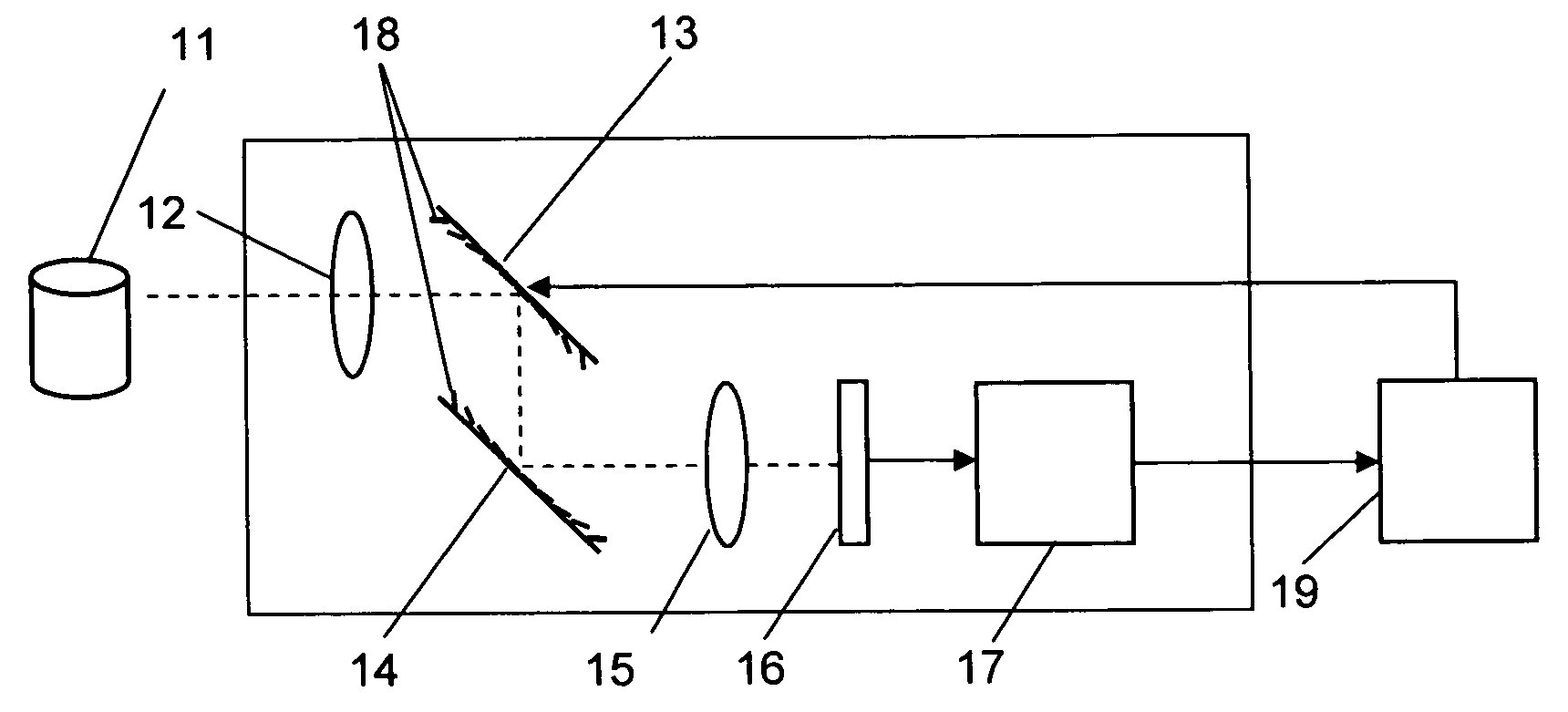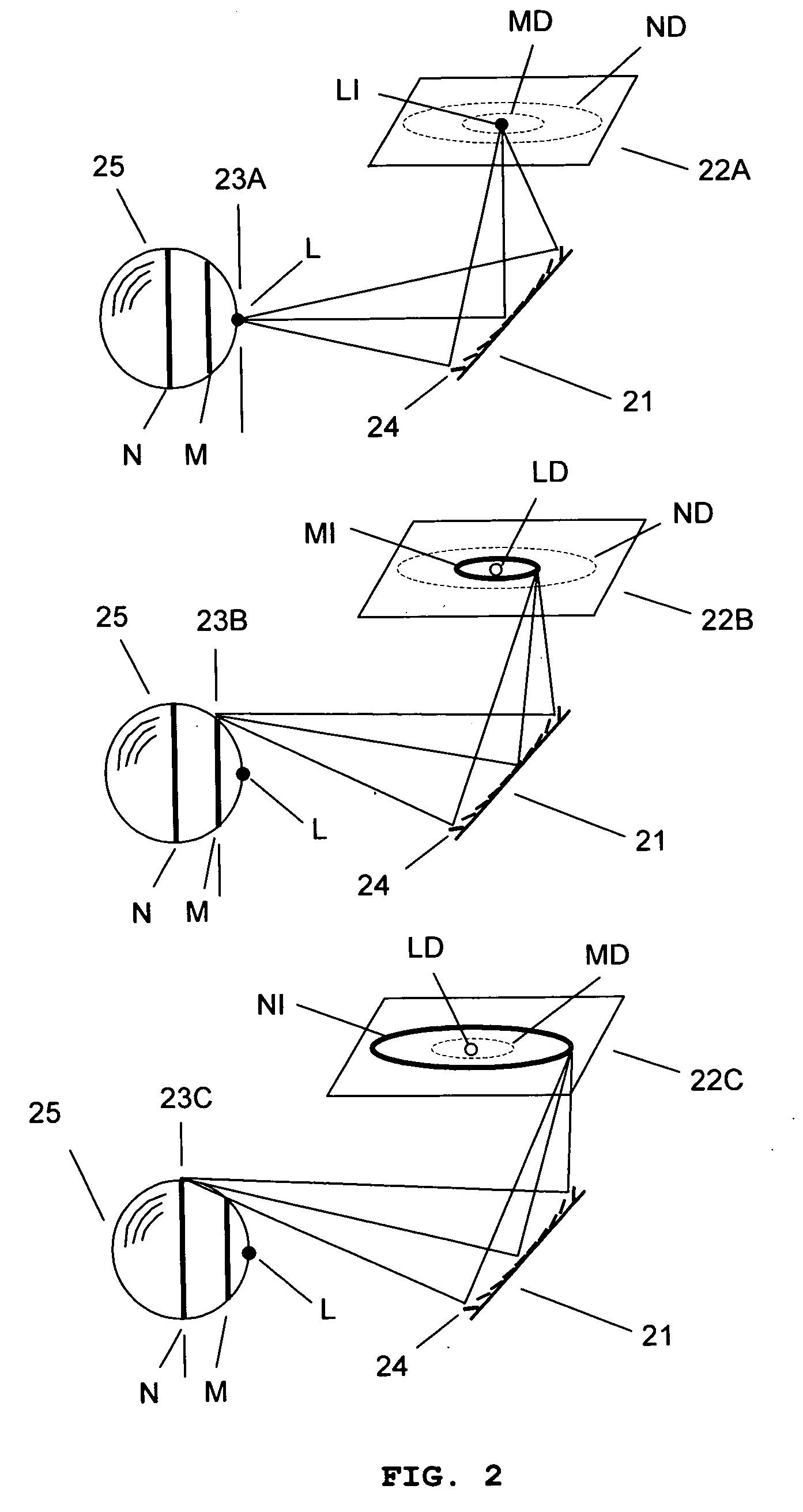Three-dimensional imaging system for pattern recognition
a three-dimensional imaging and pattern recognition technology, applied in the field of imaging systems, can solve the problems of high-throughput application or surveillance systems, difficult to capture the center of a finger, and degrade the accuracy of optical scanning, and achieve the effects of fine resolution, large focal length variation, and fast response tim
- Summary
- Abstract
- Description
- Claims
- Application Information
AI Technical Summary
Benefits of technology
Problems solved by technology
Method used
Image
Examples
Embodiment Construction
[0036]FIG. 1 illustrates a real-time three-dimensional imaging system for pattern recognition according to the preferred embodiment of the present invention. The imaging system takes an image from the object 11 by using an objective lens 12, the first variable focal length lens 13, the second variable focal length lens 14, and an auxiliary lens 15. The imaged pattern in an image sensor 16 is processed by an image processing unit 17. The image sensor 16 receives two-dimensional images with different focal planes that are shifted by changing the focal length of the variable focal length lens 14. The image processing unit 17 extracts in-focus pixels or areas from original pictures with different focal planes to generate an all-in-focus image with depth information. The focal length of the variable focal length lens 14 is changed without the macroscopic movement of the lens system or time delay since each micromirror 18 of the variable focal length lenses 14 is actuated by electrostatic...
PUM
 Login to View More
Login to View More Abstract
Description
Claims
Application Information
 Login to View More
Login to View More - R&D
- Intellectual Property
- Life Sciences
- Materials
- Tech Scout
- Unparalleled Data Quality
- Higher Quality Content
- 60% Fewer Hallucinations
Browse by: Latest US Patents, China's latest patents, Technical Efficacy Thesaurus, Application Domain, Technology Topic, Popular Technical Reports.
© 2025 PatSnap. All rights reserved.Legal|Privacy policy|Modern Slavery Act Transparency Statement|Sitemap|About US| Contact US: help@patsnap.com



